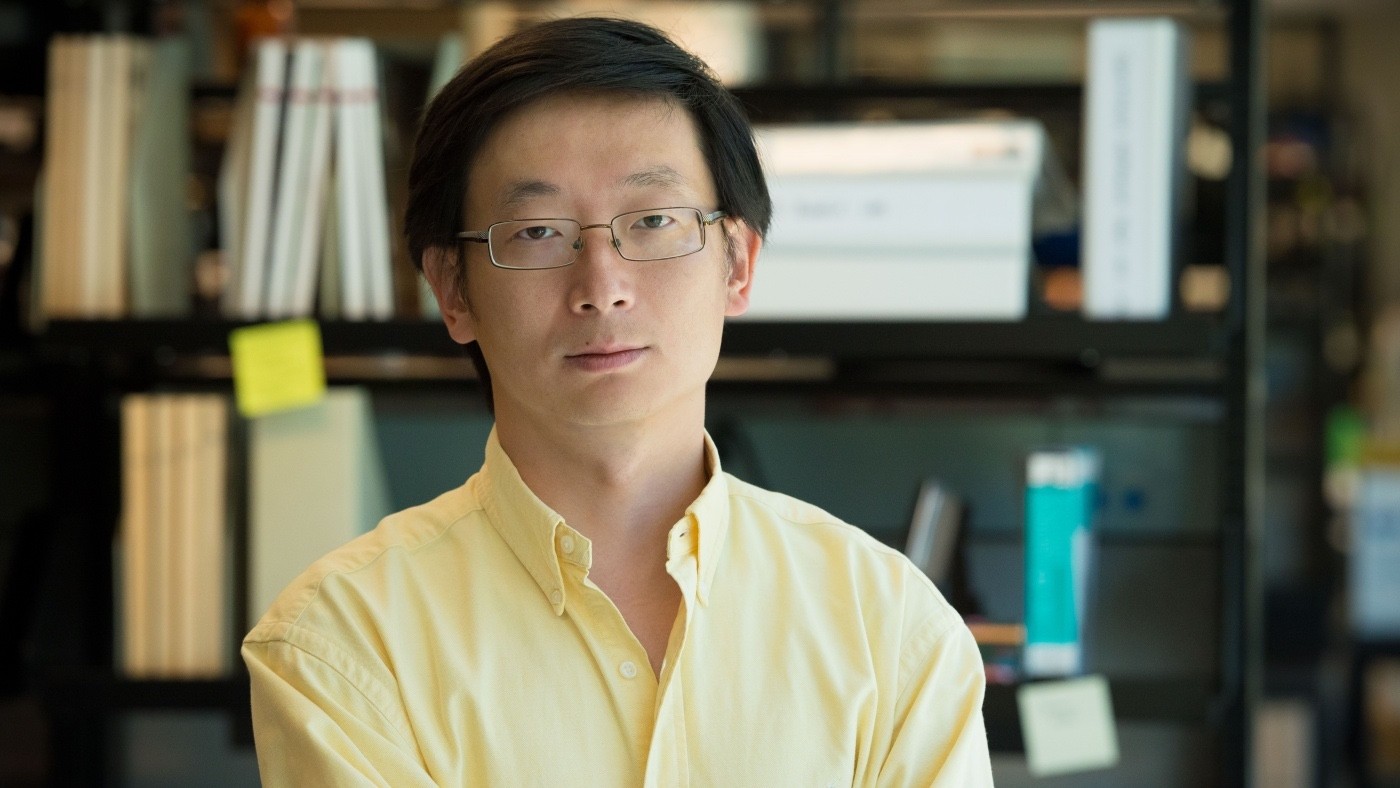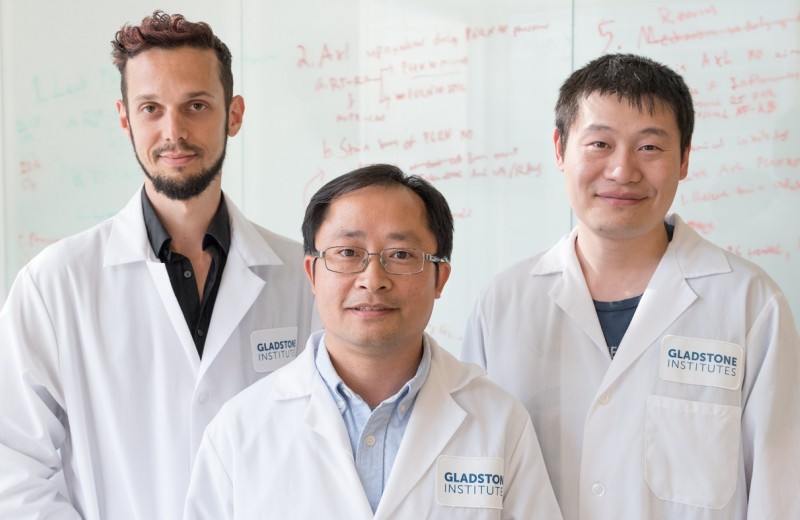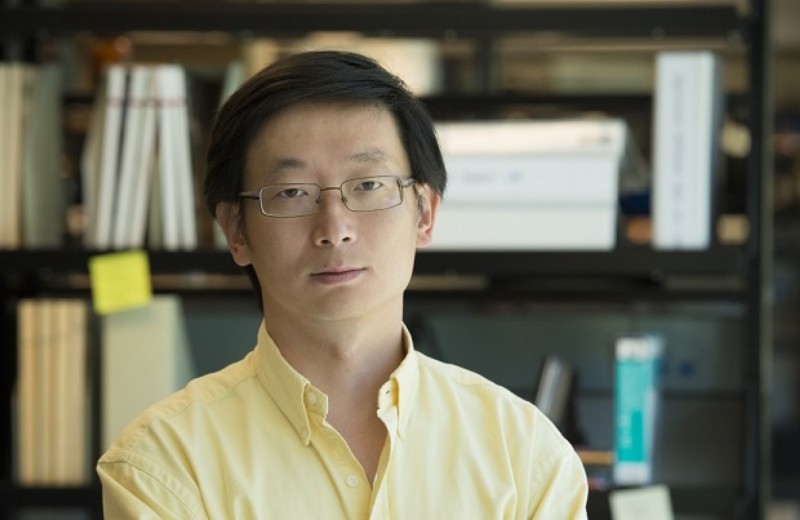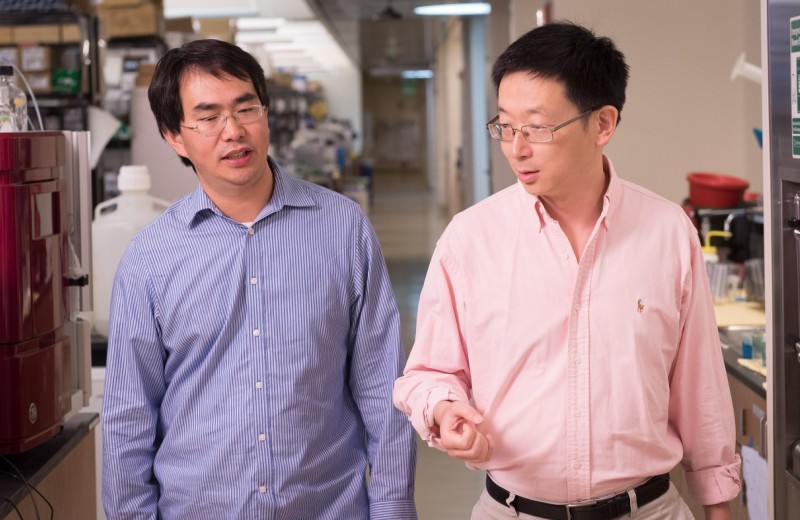Gladstone NOW: The Campaign Join Us on the Journey✕

Sheng Ding discovered a way to enhance the efficiency of CRISPR genome editing with the introduction of a few key chemical compounds. [Photo: Chris Goodfellow, Gladstone Institutes]
One of the most exciting scientific advances made in recent years is CRISPR—the ability to precisely edit the genome of cells. However, although this method has incredible potential, the process is extremely inefficient. Fortunately, scientists at the Gladstone Institutes have discovered a way to enhance the efficiency of CRISPR with the introduction of a few key chemical compounds.
“Currently, there is a trade-off with CRISPR: the technology is very precise, but it is also quite inefficient,” says first author Chen Yu, a postdoctoral fellow at the Gladstone Institutes. “We improved this by introducing small molecules that are able to maintain the precision of the technology while boosting its efficiency.”
In CRISPR, a protein is delivered into the cell that cuts the genome at an exact specified location. The cell’s DNA can then either fuse back together after the faulty gene is removed, or scientists can insert a new gene in the old one’s place, substituting bad DNA for good.
Published in the journal Cell Stem Cell, the researchers, in collaboration with co-senior author Lei Stanley Qi, PhD, at Stanford University, successfully identified two small molecules that significantly improve the insertion of new genetic information into a cell’s DNA. During their search, the scientists also discovered two compounds that inhibit insertion but enhance deletion of DNA, suggesting the two processes are competitive actions in the cell.
Notably, the researchers were able to accomplish this genome manipulation in several different cell lines, including induced pluripotent stem cells and tissue-specific cells. This is particularly important as it indicates the method can be used in a variety of cell types to create disease models and contribute to the discovery of new disease-specific therapeutics.
Senior author Sheng Ding, PhD, a senior investigator at Gladstone, says that the potential of this discovery extends beyond improving the efficiency of CRISPR. “This study is the first to show that we can successfully manipulate genome engineering using small molecules. This gives us greater capability, enabling us to tune the machinery and also turn it on or off with chemicals, which has important implications for regulating the genome editing process.”
Other researchers on the study include Tianhua Ma, Kai Liu, Shaohua Xu, Yu Zhang, and Min Xie from the Gladstone Institutes. Yanxia Liu and Honglei Liu from Stanford University and Marie La Russa from the University of California, San Francisco also took part in the study.
Funding was provided by the National Heart, Lung, and Blood Institute.
Support Our COVID-19 Research Efforts
Gladstone scientists are moving quickly to respond to the coronavirus outbreak. Help us end this pandemic.
Roddenberry Gift Ushers Gladstone Stem Cell Research into the Future
Roddenberry Gift Ushers Gladstone Stem Cell Research into the Future
The path to medical breakthroughs lies in bold, ambitious science
Donor Stories Institutional News Spinal Cord Injuries Alzheimer’s Disease Diabetes Roddenberry Stem Cell Center Bruneau Lab Ding Lab Huang Lab McDevitt LabResearchers Create First Stem Cells Using CRISPR Genome Activation
Researchers Create First Stem Cells Using CRISPR Genome Activation
Activating a single gene is sufficient to change skin cells into stem cells.
News Release Research (Publication) Cardiovascular Disease Ding Lab CRISPR/Gene Editing Stem Cells/iPSCsStudy Reveals How to Reprogram Cells in our Immune System
Study Reveals How to Reprogram Cells in our Immune System
The discovery could improve treatments for autoimmune diseases and cancer
Ding Lab Stem Cells/iPSCs Immunology



